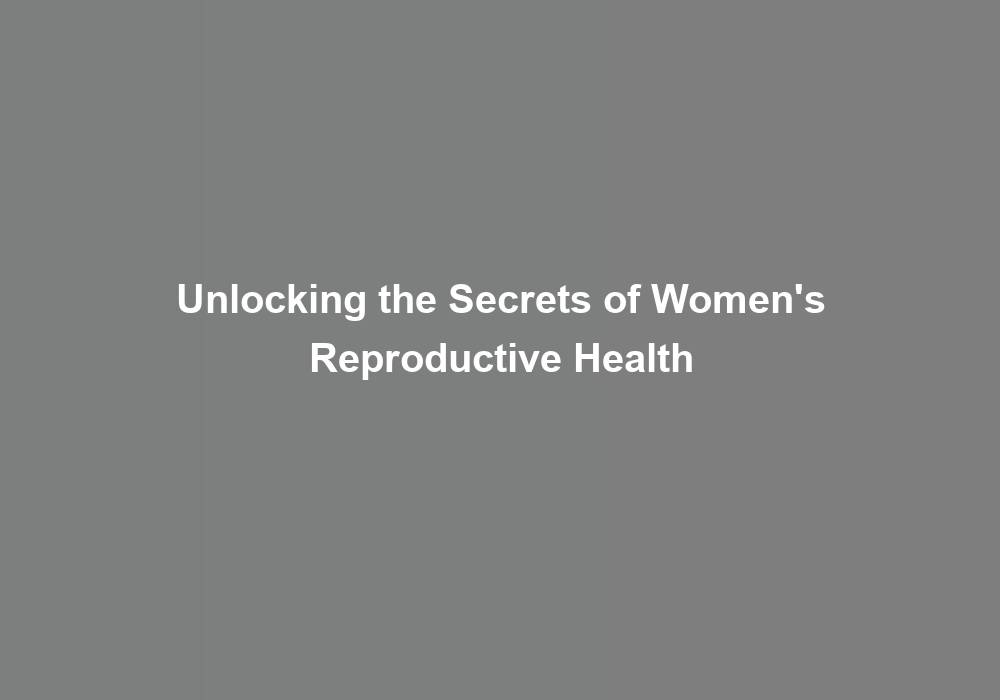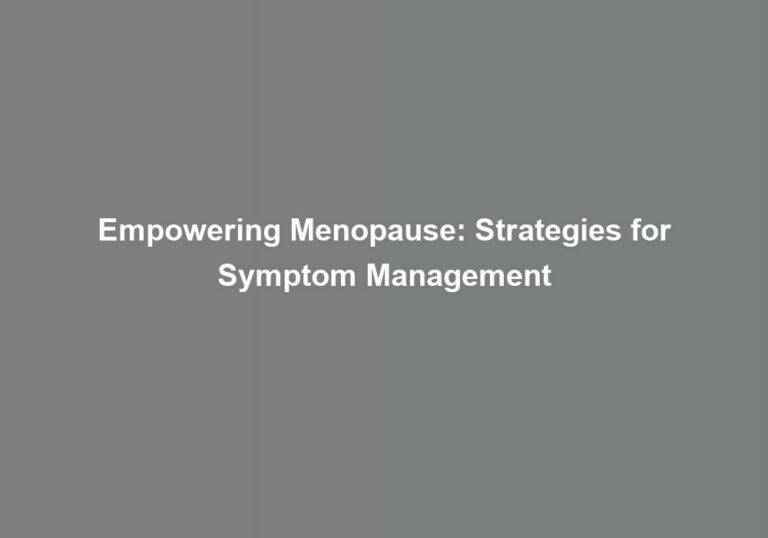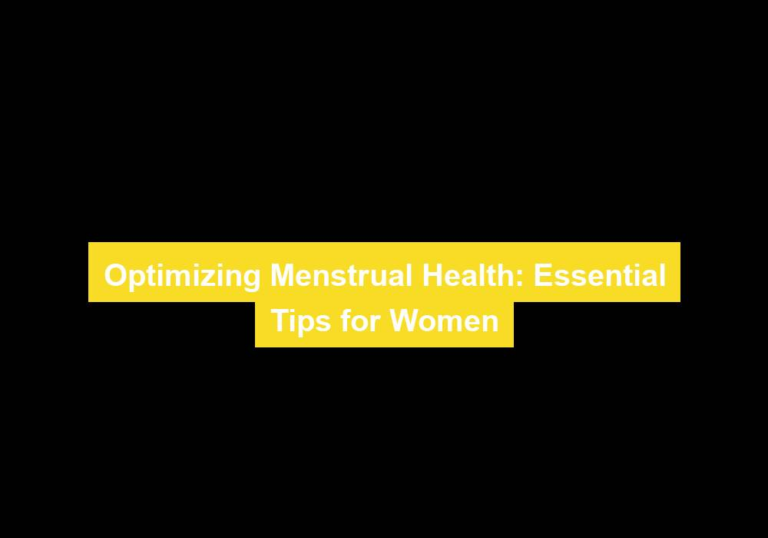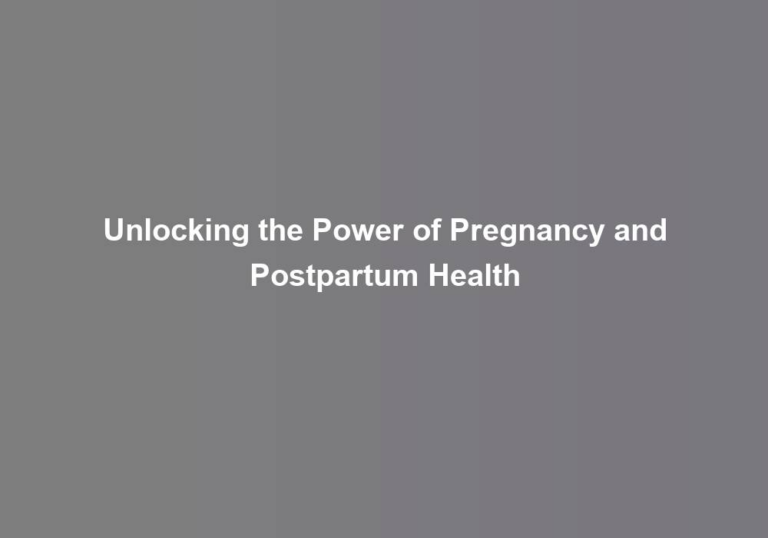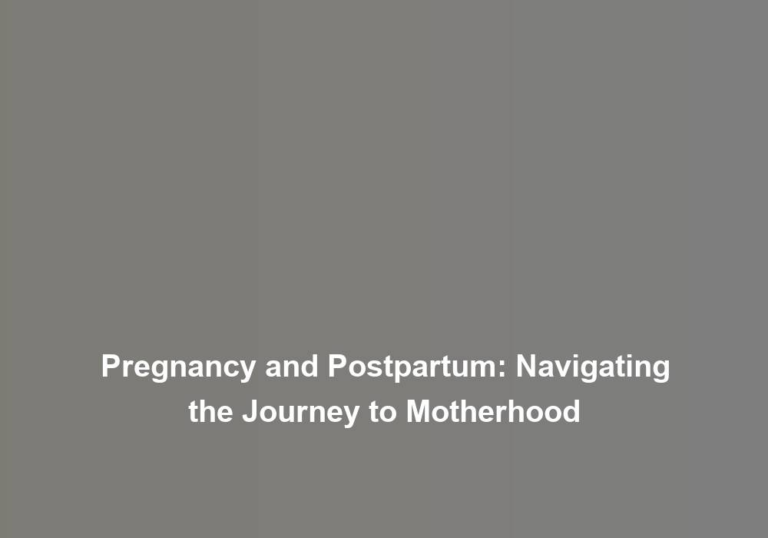Unlocking the Secrets of Women’s Reproductive Health
You may think that womenG??s reproductive health is a well-understood and extensively researched area of medicine, but the reality is that there are still many secrets waiting to be unlocked. From the intricacies of the menstrual cycle and hormonal regulation to the latest innovations in contraception methods and treatments for reproductive disorders, there is a myriad of fascinating discoveries that are reshaping our understanding of womenG??s health. Understanding these secrets is not only crucial for individual well-being but also for advancing medical knowledge as a whole. The latest research in this field is shedding light on previously unknown aspects of womenG??s reproductive health, and you wonG??t want to miss out on what weG??ve uncovered.
Menstrual Cycle and Hormonal Regulation
Understanding your menstrual cycle and the hormonal regulation that governs it is essential for maintaining your reproductive health. Menstrual health awareness empowers you to recognize the signs of hormonal imbalance and take proactive steps to address them. Your menstrual cycle consists of four main phases: menstruation, the follicular phase, ovulation, and the luteal phase. Each phase is characterized by specific hormone fluctuations orchestrated by the complex interplay of estrogen, progesterone, follicle-stimulating hormone (FSH), and luteinizing hormone (LH).
During menstruation, your estrogen and progesterone levels are low, triggering the shedding of the uterine lining. As your body transitions into the follicular phase, FSH levels rise, stimulating the growth of follicles in the ovaries and prompting an increase in estrogen production. Ovulation marks a surge in LH, triggering the release of the mature egg from the ovary. The luteal phase sees a significant rise in progesterone, which prepares the uterine lining for potential implantation.
Maintaining hormonal balance throughout these phases is crucial for a healthy menstrual cycle. Hormonal imbalances can manifest as irregular periods, mood swings, acne, or other symptoms. By understanding the intricate dance of hormones throughout your cycle, you can better grasp your bodyG??s unique rhythms and recognize any deviations that may warrant attention. Cultivating this awareness empowers you to advocate for your reproductive health and seek the support you need to achieve hormonal equilibrium.
Fertility and Ovulation Tracking
To effectively track your fertility and ovulation, it is important to understand the key indicators and methods for identifying your most fertile days. Ovulation prediction and fertility awareness can help you understand your bodyG??s natural rhythm and increase your chances of conceiving.
One method of tracking fertility is by monitoring your basal body temperature. Your basal body temperature slightly increases after ovulation, indicating that you have already ovulated. By tracking this temperature shift over several cycles, you can predict when you are most likely to ovulate in the future.
Another way to track ovulation is by observing changes in cervical mucus. As you approach ovulation, your cervical mucus becomes clear, slippery, and stretchy G?? resembling raw egg whites. This type of mucus helps sperm travel to the egg more easily.
Additionally, using ovulation predictor kits can help you determine your fertile window. These kits detect the surge in luteinizing hormone, which occurs 24-36 hours before ovulation. By identifying this hormone surge, you can anticipate when you are most fertile and plan intercourse accordingly.
Fertility awareness also involves keeping track of your menstrual cycle and any physical symptoms like breast tenderness or abdominal discomfort, which can indicate ovulation. Understanding these indicators and methods for identifying your most fertile days can empower you to take control of your reproductive health and family planning.
Contraception Methods and Innovations
If youG??re considering contraception methods and innovations, itG??s essential to explore the options available to make an informed decision about your reproductive health. There are various contraception methods and innovations designed to meet different needs and preferences. Barrier methods, such as condoms and diaphragms, provide a physical barrier to prevent sperm from reaching the egg. These methods are easily accessible and have the added benefit of reducing the risk of sexually transmitted infections.
Hormonal options, including birth control pills, patches, and hormonal IUDs, work by altering hormone levels to prevent ovulation and thicken cervical mucus, making it harder for sperm to reach the egg. These methods are highly effective when used correctly and can also help regulate menstrual cycles and reduce menstrual pain.
Long-acting, reversible contraceptives (LARCs) offer an innovative approach to birth control. This category includes hormonal and non-hormonal IUDs and contraceptive implants. Once inserted, these methods provide continuous pregnancy prevention for an extended period, ranging from 3 to 10 years, depending on the specific type. They are convenient, as they eliminate the need for daily or monthly maintenance and are highly effective.
When considering contraception methods and innovations, itG??s important to consult with a healthcare provider to determine the most suitable option for your individual needs and health considerations. Making an informed decision about contraception can empower you to take control of your reproductive health and overall well-being.
Reproductive Disorders and Treatments
When facing reproductive disorders, seeking timely medical intervention is crucial for addressing any potential concerns and exploring available treatment options to ensure your reproductive health and well-being. ItG??s important to be informed about the various reproductive disorders and the treatments that are available to address them. Here are some key considerations and treatment options for common reproductive disorders:
-
Endometriosis Management
-
If you experience symptoms such as severe menstrual cramps, chronic pelvic pain, and infertility, itG??s essential to consult a healthcare professional. Treatment options for endometriosis may include medication to relieve pain and reduce the growth of endometrial tissue, hormone therapy, or in severe cases, surgery to remove the affected tissue.
-
Infertility Causes
-
If you and your partner are struggling to conceive, itG??s crucial to seek medical advice to identify potential causes of infertility. Treatment options may include fertility medications to stimulate ovulation, intrauterine insemination (IUI), in vitro fertilization (IVF), or other assisted reproductive technologies to increase the chances of conception.
-
Polycystic Ovary Syndrome (PCOS)
-
PCOS can cause irregular periods, excessive hair growth, acne, and fertility issues. Treatment for PCOS may involve lifestyle modifications, such as diet and exercise, to manage symptoms. Additionally, medication to regulate menstrual cycles, reduce excessive hair growth, and assist with fertility may be recommended. ItG??s essential to work closely with a healthcare provider to address the specific symptoms and concerns related to PCOS.
Understanding these reproductive disorders and available treatments can empower you to make informed decisions about your reproductive health. Always remember that seeking professional medical advice is the first step toward managing and treating reproductive disorders effectively.
Advances in WomenG??s Reproductive Health Research
Discover the latest breakthroughs in womenG??s reproductive health research, providing valuable insights and potential advancements for your well-being. In recent years, significant progress has been made in the management of endometriosis through advanced surgical techniques. Researchers have developed minimally invasive procedures that aim to remove endometrial tissue while preserving fertility. These techniques offer improved outcomes and reduced recovery times, providing hope for women suffering from this debilitating condition.
Additionally, research into polycystic ovary syndrome (PCOS) has led to a better understanding of the hormonal imbalances underlying the disorder. This has paved the way for more targeted and effective treatments. Scientists have been exploring novel approaches to regulate hormonal levels, leading to improved symptom management and increased chances of conception for women with PCOS. This research not only offers hope for those currently struggling with the condition but also holds promise for future generations.
Furthermore, advancements in reproductive health research have contributed to the development of personalized treatment plans for women. By considering individual genetic, hormonal, and environmental factors, healthcare providers can tailor interventions to address specific needs and optimize outcomes. This personalized approach represents a significant step forward in womenG??s reproductive health, offering a more holistic and effective way to address a range of conditions.
Conclusion
So, now you know the ins and outs of womenG??s reproductive health. From the menstrual cycle to fertility tracking to contraception methods, there are a lot of options and advancements to consider. ItG??s like a treasure chest of knowledge waiting to be unlocked. Keep exploring, stay informed, and donG??t be afraid to seek help from healthcare professionals if you have any concerns. Your journey to understanding and taking charge of your reproductive health is just beginning.

